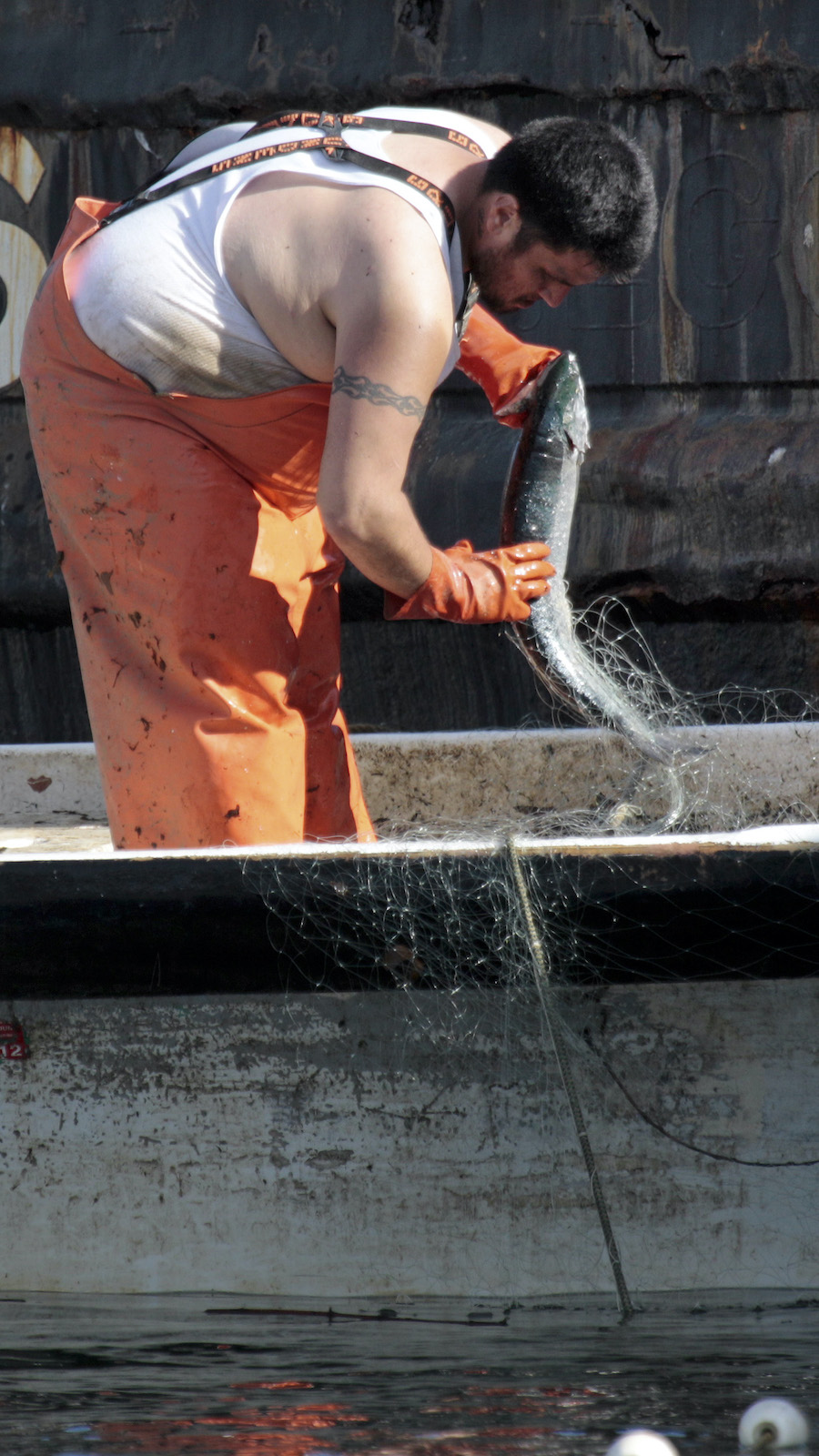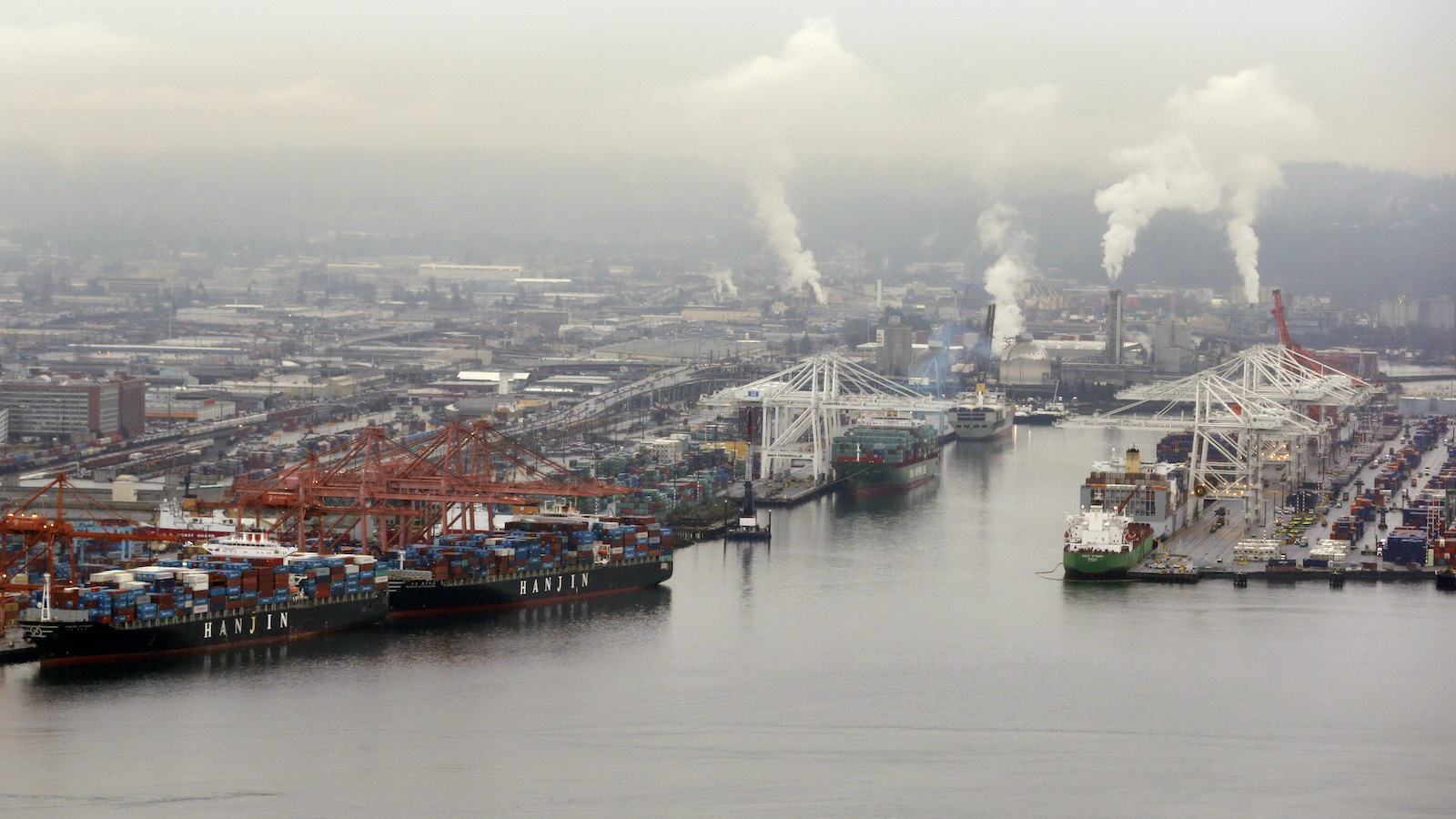It isn’t easy to undo a century of industrial pollution — or even agree on how to do it.
Efforts to clean up the Lower Duwamish Waterway have been decades in the making. The five-mile stretch of Seattle’s only river was declared a Superfund site in 2001 after nearly 100 years of industrial activity, such as the manufacturing of airplane parts and the production of asphalt. In 2014, the Environmental Protection Agency, or EPA, released a comprehensive cleanup plan for the waterway. Under the plan — which was produced with years of community engagement from residents of the Duwamish Valley — the City of Seattle, the Port of Seattle, King County, and the airplane manufacturer Boeing would be held financially responsible for reducing contaminant concentrations in the Lower Duwamish Waterway, while the EPA would oversee the project.
Since then, cleanup efforts have proceeded slowly but steadily. However, a series of proposed changes to the site’s cleanup plan, put forward by the EPA over the past several months, has thrown a wrench in the process. Community groups say they were blindsided by the EPA’s proposals, which they argue will expose disadvantaged communities to unacceptable levels of toxic pollution.
“We feel like they have failed to uphold any environmental justice principles,” said Paulina López, executive director of the Duwamish River Community Coalition, or DRCC, a group that was founded in 2001 to represent community voices on issues regarding the Duwamish River.
There are three issues at play, including an EPA analysis that would allow higher levels of pollution to remain in an adjacent Superfund site, as well as a proposal to permit a former metal company to leave contaminants on the Lower Duwamish Waterway’s muddy bottom. But environmental health experts have specifically called into question the EPA’s proposal to raise acceptable levels of benzo(a)pyrene, or BaP, and similar compounds in the Superfund’s sediment.
BaP, which causes cancer in humans, is part of a group of compounds known as carcinogenic polycyclic aromatic hydrocarbons, or cPAHs. These compounds are produced from the burning of coal, oil, gas, wood, trash, and tobacco, or from cooking meat and other foods at high temperatures. Once released into the environment, cPAHs can bind to small particles that get into people’s lungs, or they can enter the body when people eat meat from animals that have been exposed. They can also pass through skin, posing a risk from contact with contaminated substances like sand.

The proposal to raise acceptable concentrations of BaP and other cPAHs in the Lower Duwamish Waterway reflects the findings from the EPA’s newest toxicity assessment for BaP, which was released in 2017. After considering all available research on BaP, the agency zeroed in on two rodent studies — both more than 20 years old — that suggested BaP was much less dangerous than it had previously thought. In January 2021, the EPA folded this analysis into its cleanup plan for the Lower Duwamish Waterway, now suggesting that seven times more BaP than previously authorized should be allowed to remain in the river’s sediment.
However, independent researchers at the University of Washington Superfund Research Program have raised questions about the weight of evidence behind the EPA’s reassessment. In a public comment to the EPA, Tom Burbacher, a professor of environmental and occupational health at the University of Washington, argued that the agency’s findings were not supported by additional research from the past two decades. Plus, he wrote, they were inconsistent with prior studies on BaP — also conducted on rodents — which indicate toxicity levels that are roughly seven times those suggested by the two newer studies.
“The whole weight of evidence is very weak,” Burbacher told Grist in an interview. “If you look at the past 20 years since [the studies] were published, there’s nothing that would give you confidence that these new numbers are accurate, that they’re good for public health and safety.
“If I were on that committee,” he added, “my recommendation would be that EPA should go get more data.”
Burbacher also raised concerns about the EPA’s use of BaP to set relative toxicity levels for a host of other cPAHs, saying it was based on “questionable” assumptions. Indeed, research from Oregon State University — where scientists have been studying the impact of the EPA’s new BaP standards on the Portland Harbor Superfund site — has suggested that cPAHs should be studied individually, and that the carcinogenicity of mixtures of cPAHs cannot reliably be predicted from studies on just one of the compounds.
Bill Dunbar, a spokesperson for the EPA’s regional office for the Pacific Northwest, told Grist that the agency was unaware of the University of Washington Superfund Research Program’s BaP assessment and concerns. According to Dunbar, a separate review from the EPA’s Chemical Assessment Advisory Committee found that the new BaP estimate had used “appropriate studies and models” and would not reduce the protectiveness of the cleanup plan.
For the Lower Duwamish Waterway, the EPA’s proposed change would raise the acceptable concentration of BaP and other cPAHs in the top 10 centimeters of sediment under the river from 380 to 2,800 parts per billion. This roughly seven-fold increase would also apply to sand in beach play areas, as well as areas that may be used for clamming. According to the EPA, the new standards would require five fewer acres to be cleaned up and would lower costs by about $1 million — a 0.33 percent sliver off of the whole project’s $342 million price tag.
“Saving $1 milion is not worth putting all these people at risk of these contaminants,” said López, arguing that the EPA should hold the responsible parties accountable to the initial cleanup plan — the one that was produced from years of engagement with residents of the Duwamish Valley. Any changes, López said, should be vetted by those community stakeholders: “We demand full involvement and full consultation for anything that is related to the Superfund site.”

According to Dunbar, the EPA remains committed to keeping community members informed of its decisions and processes. “We acknowledge the concerns about environmental justice and the importance of protecting communities affected by the site,” he told Grist via email. EPA and DRCC representatives hold regular meetings, Dunbar wrote, and the EPA has focused outreach efforts on communities that eat fish and shellfish from the Superfund site. Additionally, Dunbar wrote that DRCC has had “access to scientific and site-specific information” regarding the change in allowable BaP concentrations since at least 2019.
However, Linn Gould, the founder of the nonprofit Just Health Action and a technical adviser to DRCC, insisted that Duwamish Valley residents had not been adequately included in the EPA’s decision to propose changes to the Superfund cleanup site. She called the lack of community consultation “an egregious breach of the City, the Port, and King County’s commitment to equity.”
“There’s clearly a failure to connect the dots that this has environmental justice and equity ramifications,” Gould said.
According to a 2013 report that Gould helped to write for DRCC, the EPA, and other groups, between 52 and 71 percent of Duwamish Valley residents are nonwhite, and up to 39.5 percent live below the poverty line. Due to an abundance of industrial facilities in the area, these residents are already exposed to the highest levels of particulate matter and the second-highest levels of benzene in all of Seattle. They are more likely to be hospitalized for asthma than other Seattleites, and life expectancy for the area is more than eight years below the citywide average.
Given these preexisting inequities, community advocates now feel betrayed by the EPA’s proposal to leave more pollution in the Lower Duwamish Waterway — especially when the EPA, the City of Seattle, and King County have in recent years have made commitments to prioritize racial and environmental justice in the Duwamish Valley.
“They want to go back on their word,” said Michelle Carranza, a rising high school senior and an intern for DRCC. She grew up next to the river but was never allowed to swim in it. Now, as she and other advocates wait for the EPA to make a final decision on its BaP proposal, she worries that the Duwamish will never be safe for fishing or recreation. “Knowing that it could be this way in the future, that kids will also not be able to enjoy the river that’s right next to their homes,” she said, “it’s heartbreaking.”




